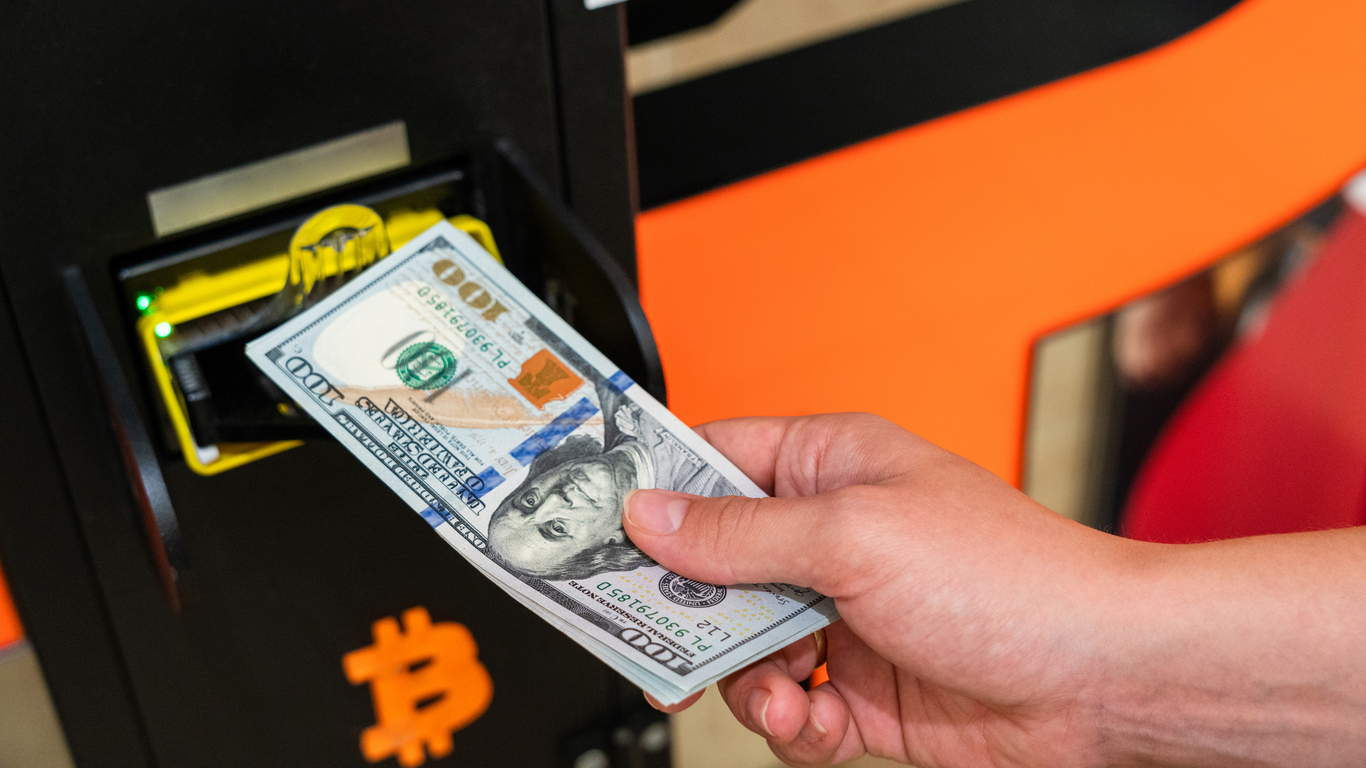As the popularity of Bitcoin and other cryptocurrencies continues to rise, so too does the demand for convenient ways to buy and sell these digital assets. Bitcoin ATMs (BTMs) have emerged as a valuable tool for users seeking an accessible, easy-to-use method of exchanging traditional currency for Bitcoin. This article explores the world of Bitcoin ATMs, examining their history, functionality, benefits, drawbacks, and impact on the wider cryptocurrency landscape.
What is a Bitcoin ATM?
A Bitcoin ATM is a kiosk or machine that allows users to buy and sometimes sell Bitcoin and other cryptocurrencies using cash or debit/credit cards. Unlike traditional ATMs, which connect to a bank account to dispense fiat currency, Bitcoin ATMs connect to the internet and a cryptocurrency exchange platform, allowing users to interact directly with the cryptocurrency market. These machines serve as an accessible entry point for those interested in cryptocurrency, even if they lack advanced technical knowledge.
Bitcoin ATMs are typically located in high-traffic areas such as shopping malls, gas stations, and retail stores, making them accessible to a broad audience. Today, Bitcoin ATMs are spreading rapidly worldwide, with tens of thousands of machines available across different countries, primarily concentrated in the United States, Canada, and parts of Europe.
How Do Bitcoin ATMs Work?
Bitcoin ATMs operate through a few simple steps, making them user-friendly for individuals new to cryptocurrency. Here’s a step-by-step look at how they typically work:
- Identity Verification: Many Bitcoin ATMs require users to complete a Know Your Customer (KYC) process to comply with regulatory standards. This may include verifying a phone number, scanning an ID, or even using facial recognition.
- Select Transaction Type: Once the verification process is complete, users choose whether they want to buy or sell Bitcoin (if the ATM supports both functions). Some machines only support Bitcoin purchases, while others allow for both buying and selling.
- Enter Amount and Payment Method: Users input the amount of Bitcoin they wish to purchase, often in either fiat currency (like USD or EUR) or Bitcoin terms. Payment can be made in cash or, in some cases, by credit or debit card.
- Wallet Address Entry: Users provide a wallet address to receive their Bitcoin. This can be done by scanning a QR code on their mobile wallet app or entering a public wallet address manually.
- Confirmation and Transaction: After confirming the transaction details, users proceed with payment. The machine will then complete the transaction, sending the purchased Bitcoin to the user’s wallet. A receipt may also be printed or emailed as proof of the transaction.
Bitcoin ATMs that support selling typically dispense fiat cash in exchange for Bitcoin. The process works in reverse, requiring users to send Bitcoin to the ATM’s wallet address, after which the machine will dispense the equivalent amount in fiat currency.
Types of Bitcoin ATMs
Bitcoin ATMs can be broadly classified into two types:
- One-Way ATMs: These ATMs allow only the purchase of Bitcoin or other cryptocurrencies with fiat currency. They are generally more common and easier to install, making up the majority of Bitcoin ATMs in the market.
- Two-Way ATMs: These machines support both buying and selling of Bitcoin. Users can purchase Bitcoin with fiat currency and sell Bitcoin to receive cash. Two-way ATMs are slightly more complex to set up and operate, which is why they are less common and often charge higher fees.
Benefits of Bitcoin ATMs
The popularity of Bitcoin ATMs can be attributed to several advantages they offer to users:
- Accessibility: Bitcoin ATMs bring cryptocurrency access to everyday people, including those who may not have the technical knowledge or experience to use traditional online exchanges.
- Ease of Use: With a straightforward, intuitive interface, Bitcoin ATMs make buying and selling Bitcoin as easy as using a traditional bank ATM.
- Privacy: For those concerned about privacy, Bitcoin ATMs typically offer more anonymity than online exchanges. While KYC requirements exist, transactions are generally more private than those conducted on centralized exchanges.
- Instant Transactions: Bitcoin ATMs provide instant access to cryptocurrency, a key advantage for users who need to complete transactions immediately, without the waiting period associated with traditional exchanges.
- Localized Service: By being available in physical locations, Bitcoin ATMs allow users to transact directly, which can be particularly beneficial in countries where banking access is limited.
Drawbacks of Bitcoin ATMs
Despite their benefits, Bitcoin ATMs have certain limitations that users should consider:
- High Fees: Bitcoin ATMs often charge higher fees compared to online exchanges, typically ranging from 7% to 20% of the transaction amount. This makes them more expensive for frequent or high-value transactions.
- Limited Availability: Although the number of Bitcoin ATMs is growing, they are still not as widespread as traditional ATMs, limiting access for users in certain regions.
- Regulatory Constraints: In some countries, regulatory requirements are stringent, limiting the availability and functionality of Bitcoin ATMs. Compliance with KYC and Anti-Money Laundering (AML) laws can vary, which may affect the level of anonymity for users.
- Security Risks: While Bitcoin ATMs are generally safe to use, users should remain vigilant, as some machines may be vulnerable to hacking or fraud, particularly if they are poorly maintained or located in unsupervised areas.
How to Locate a Bitcoin ATM
Several websites and mobile apps offer tools to locate Bitcoin ATMs nearby. Platforms like CoinATMRadar, for example, provide a comprehensive map of Bitcoin ATMs worldwide, including information on machine types, supported cryptocurrencies, fees, and any identification requirements. Users can filter results by location, making it easy to find the nearest Bitcoin ATM based on specific criteria.
Bitcoin ATM Providers and Operators
Several companies manufacture and operate Bitcoin ATMs. Some of the most prominent operators include:
- Genesis Coin: One of the most popular Bitcoin ATM manufacturers, Genesis Coin machines are widely available and known for their reliability and user-friendly design.
- General Bytes: This company provides both one-way and two-way ATMs, supporting a wide range of cryptocurrencies and advanced security features.
- Coinsource: Operating primarily in the United States, Coinsource offers Bitcoin ATMs that focus on user experience and compliance with U.S. regulations.
- Bitaccess: Based in Canada, Bitaccess machines are known for their flexibility, offering support for multiple cryptocurrencies and accommodating various transaction limits.
These operators ensure that Bitcoin ATMs meet regulatory standards and provide a seamless user experience. Their machines are regularly updated to include the latest security and technological advancements, enhancing user safety and functionality.
The Future of Bitcoin ATMs
The growth of Bitcoin ATMs reflects the increasing acceptance of cryptocurrencies within the mainstream financial ecosystem. As Bitcoin and other cryptocurrencies gain wider acceptance, demand for physical ATMs is expected to rise, expanding their global reach. Bitcoin ATMs also hold potential for integration with other financial technologies, such as contactless payment methods and digital wallets.
Moreover, Bitcoin ATMs may play a significant role in bridging the gap between traditional finance and the decentralized world of cryptocurrency, providing an accessible entry point for users of all backgrounds. This could be particularly beneficial in countries with underdeveloped banking systems or restrictive financial regulations, where Bitcoin ATMs can offer a reliable alternative for accessing financial services.
Conclusion
Bitcoin ATMs represent a promising innovation in the world of cryptocurrency, bringing accessibility, convenience, and privacy to users worldwide. While they come with certain limitations, such as high fees and regulatory challenges, their benefits make them an attractive option for those seeking a quick and secure way to buy or sell Bitcoin.
As the cryptocurrency industry continues to evolve, Bitcoin ATMs are likely to remain an essential tool for widespread adoption, serving as a physical touchpoint for digital assets. Whether you are a seasoned cryptocurrency investor or a curious beginner, Bitcoin ATMs offer an easy and direct way to access the world of cryptocurrency, making digital currency transactions more straightforward than ever.

A.k.a – alpha girl. Vinita is the founder of Alphachaincrypto. An English Lit Majors, Vinita bumped into Web3 in 2020 only to realise that tech was her calling. Later, Mathreja worked for some notable brands like Near Education, Biconomy, CoinDCX and top of the line crypto start ups.





